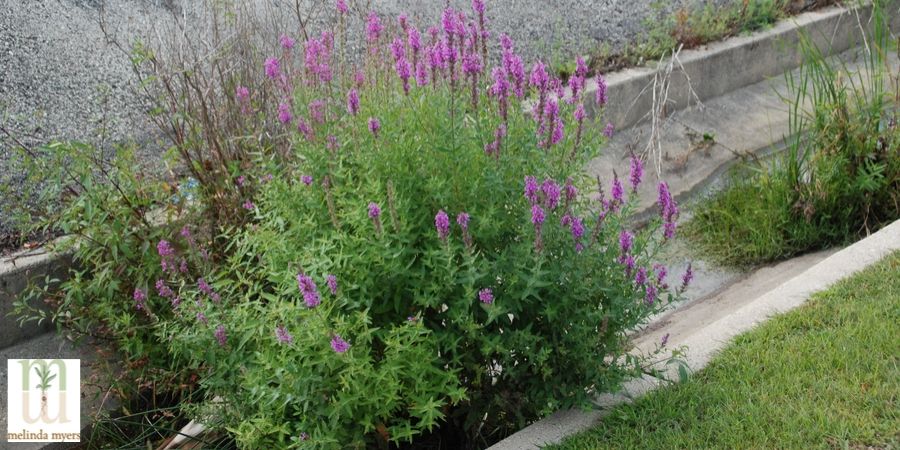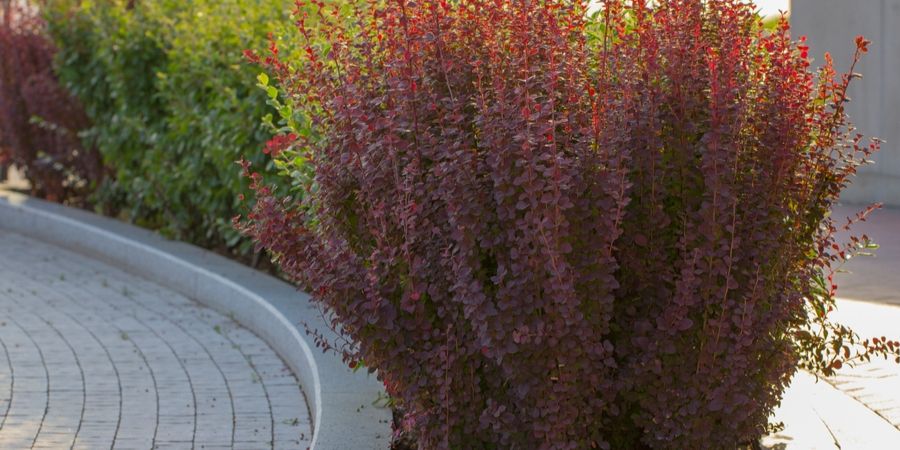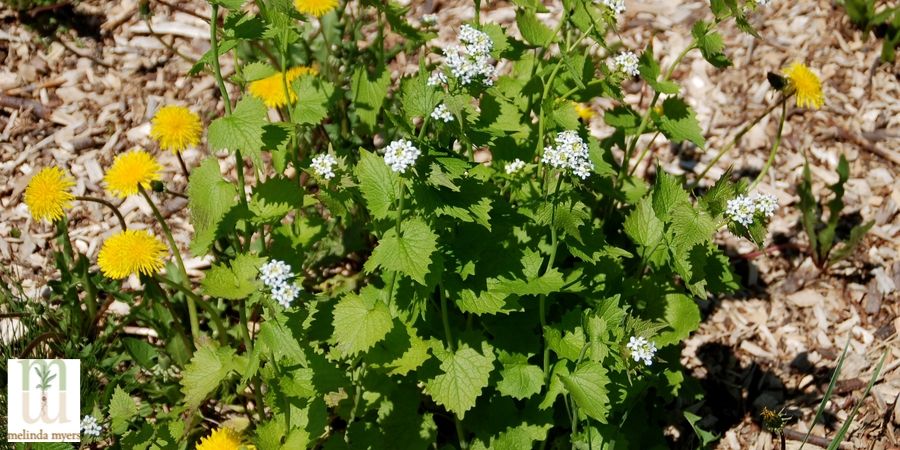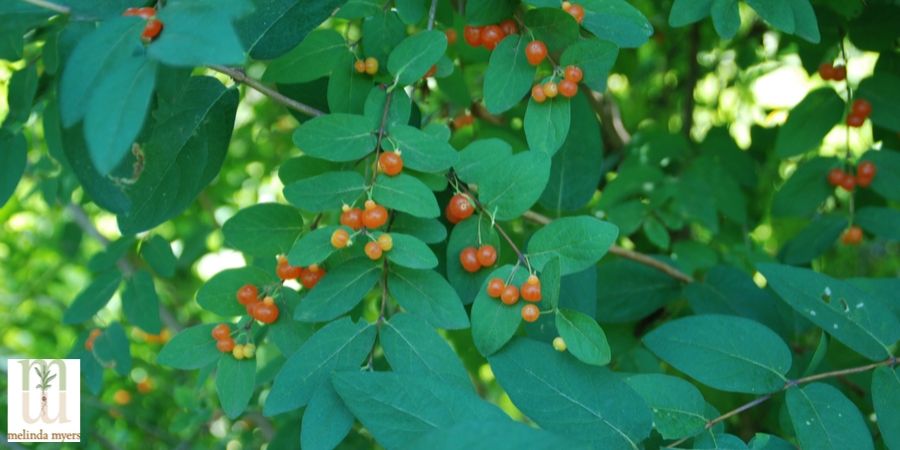What is an Invasive Plant and How Do You Control it?
- horticulturist and gardening expertNovember 16, 2019
The ads proclaimed low maintenance, long blooming and indestructible. Sounded too good to be true and it was. Many once prized landscape plants like purple loosestrife, Chinese bittersweet, buckthorn, honeysuckle, and Japanese barberry have left the garden and invaded our natural spaces. These invasive plants crowd out our native plants, destroying the food and habitat needed by beneficial insects, birds and other wildlife.

(Purple Loosestrife)
Invasive plants differ from garden bullies. These thugs are aggressive plants that crowd out their neighboring plants, but unlike invasive plants they do not leave the bounds of the landscape. The difference is important when talking about managing these plants. Invasive plants are usually restricted, can’t be sold at nurseries and shouldn’t be shared with friends or grown in the landscape. Aggressive plants are available for purchase but should be avoided, if space for them to grow and time for you to manage their spread are limited.
Noxious weeds are plants that have been identified as harmful to people, animals, crops, livestock and the environment and should be removed. Learn what weeds are noxious in your state, so you can help remove these weeds and support natural ecosystems and wildlife in your landscape. As you may have guessed, some plants fit all these categories. Knowing a plant’s growth habit, rate of growth and invasive potential can help you make better plant purchases and prioritize removal of less desirable plants.
How Invasive Plants Affect Our Natural Spaces
Invasive plants produce an abundance of seeds or easily reproduce from bits of stems, roots, and rhizomes helping them reproduce quickly. The seeds or pieces of the plant are transported by wind, birds, wildlife and people to nearby natural habitats. Once these take root, they quickly form dense stands crowding out native plants.
Many invasive plants leaf out earlier and maintain their leaves later than our native plants. This longer season gives them an advantage allowing them to outcompete nearby native plants.
It’s not just landscape plants that impact out native spaces. Door swags and wreaths often contain invasive plants like teasel and Chinese bittersweet. Their seeds are released from the decorations into nearby gardens where they grow and eventually spread to and invade natural spaces.

(Japenese Barberry)
Manage Invasive Barberry and Honeysuckle to reduce tick populations
Removing invasive plants not only helps support natural ecosystems and wildlife it can help reduce disease-carrying tick populations in the landscape. Research studies found that the presence of invasive Japanese barberry and honeysuckle bushes creates the perfect habitat for whitetail deer and disease carrying ticks.
Dense thickets of invasive barberry and honeysuckle, maintain high humidity levels preferred by ticks. As humidity drops, ticks retreat to the soil. The higher humidity under these shrubs allows ticks to remain active as long as 24 hours a day. There they wait, poised on the plants ready to latch onto a passing deer.
One study found roughly five times the density of deer and ten times the density of disease carrying ticks in honeysuckle-invaded areas than areas without honeysuckle. This alone should motivate us to get out the saws and start managing these plants.
A Few of the Top Invasive Plants
Barberries grow in sun and shade, tolerate drought and are highly adaptable. They can be found growing in open fields, wooded areas, wetlands and disturbed habitats. They are heavy bloomers, producing many seeds with as high as 90% germination rate. Breeders have introduced newer sterile varieties of this plant for use in the landscape.
Buckthorn was a popular hedge plant. It tolerated harsh urban conditions and demanded little care. Birds feed on the fruit that they purge wherever they stop to feed, rest or nest. This helped the plants spread rapidly and the laxative effect can make the birds sick.
Honeysuckle’s fragrant flowers and adaptable nature helped it become a dominant plant in the landscape. Unfortunately, the invasive species have escaped and upset the natural balance of our woodlands. Japanese honeysuckle vines climb and smother native plants and several invasive honeysuckle shrubs crowd out neighboring native plants.
Purple Loosestrife’s spikes of purple flowers are a common site in disturbed wetlands, shorelines and roadside ditches. This popular perennial can spread by seed and pieces of the root. A mature plant can produce up to 2.7 million seeds each year allowing it to become a dominant plant once established.

(Garlic Mustard)
Garlic Mustard has spread throughout the United States and become one of the worst invaders of our Northeast and Midwest forests. Its domination of the forest floor has reduced the diversity of native plants limiting the food and habit the native plants provide forest birds, insects and wildlife.
Queen Anne’s Lace may be a dainty beauty but is considered a noxious weed in at least 35 states and invasive in many. You’ll find it growing along roadsides, in disturbed sites, and abandoned fields. This member of the carrot family blooms most of the summer producing lots of seeds to start new plants. Its aggressive nature makes it a threat to some native plants.
Japanese knotweed spreads by seed and rhizome and grows quickly. Any root or rhizome left behind can start a new stand of this plant. Pieces of the knotweed often fall into nearby waterways, float downstream and start a new infestation in another location. Dense knotweed populations along waterways increase soil erosion and pollutants entering the water.
For more information on these and other common invasive plants visit the United States Department of Agriculture (USDA) National Invasive Species Information Center and the USDA Forest Service Invasive Plants website.
How To Manage Invasive Plants
Removing invasive plants can be a daunting task. You are outnumbered, the seed reserve seems immense and your schedule is already overloaded. Although it is challenging and can take years to get these pesky plants out of the landscape; the rewards are many. Gardeners find wildflowers instead of invasive plants filling their woods after removing buckthorn, honeysuckle and garlic mustard. Some even uncover cherished heirloom plants once hidden by this invasive overgrowth.

(Honeysuckle)
Break down this task into more manageable steps. First identify the invasive species and their location on your property. Contact your local Extension Service, Department of Natural Resources or the sites mentioned here for tips on managing invasive plants in your area.
Remove and destroy any small infestations. Continue to monitor these areas and other areas in your landscape. Look for any plants you may have missed or sprouts from seeds that can remain viable in the soil for years or move in from surrounding properties. Pull or dig them as soon as they appear and add mulch where appropriate.
Get your neighbors to do the same. If everyone works together the seed source begins to dwindle and you all experience greater success.
Prioritize larger areas with dense populations of invasive plants. You will need to tackle them one section at a time. Start removing invasive plants in the outermost areas where there are fewer plants. This helps prevent their spread into surrounding areas. This first step helps contain the problem.
Next tackle the area between the densely populated epicenter of the invasion and the outer area. You reduce the size of the infestation while helping stop the spread into the outer area you have cleared.
Once the surrounding areas are under control start thinning and managing the epicenter of the infestation. Continue to monitor and remove invasive plants in the surrounding area.
Clean clothes and boots after removing invasive plants to avoid further spread, Always dress appropriately and check for ticks when removing invasive plants in tick-infested areas.
Contact your local municipality for tips on disposing invasive plants. Do not compost invasive plants as the seeds and even plants can survive since most compost piles don’t heat up enough to kill them.
Consider managing invasive plants a part of your landscape design and maintenance strategies. Start replacing invasive plants you currently value for the privacy and screening they provide. Develop a new planting with native and non-invasive plants that will provide this and many more benefits. Native plants provide food, habitat and shelter for beneficial insects, birds and wildlife. These visitors provide motion and color to our landscape year-round and help manage garden pests throughout the growing season.
Removing invasive plants and replacing them with native and non-invasive plants is good for the environment, water quality and our health.

